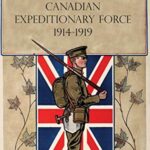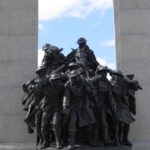The Canadian Military during the Northwest Uprising: A Detailed Survey
The Northwest Uprising of 1885, also known as the Northwest Rebellion, was one of the first serious domestic military crises faced by the young Dominion of Canada. The conflict, which took place in the Saskatchewan region, exposed deep social, political, and economic tensions between the government, the Métis, and the Indigenous peoples of the prairies. While it was a relatively short and localized conflict, the rebellion had far-reaching implications for Canada’s future, especially in how it demonstrated the emerging federal government’s ability to project military power across vast distances, control its territory, and assert its sovereignty over a diverse and growing population. The rebellion was also a moment of reckoning for the Métis, Indigenous peoples, and settlers who had been marginalized and left out of the political and economic processes that shaped the nation’s westward expansion.
This essay will explore the pre-rebellion conditions, the reasons behind the conflict, Canada’s reaction to its outbreak, the mobilization and transportation of troops, a survey of military participation in the conflict, the political dynamics surrounding the Canadian military, key areas of commitment, the home front’s reaction to the events, the evolution of the Canadian military, and detailed accounts of key campaigns, all written in the detailed and narrative style of the historian Bruce Catton.
Pre-War Conditions: The Uneasy Transformation of Canada’s West
In the years leading up to 1885, Canada was a nation undergoing rapid change. The Confederation of 1867 had given the country a formal political structure, but the Dominion was still in its formative years. The westward expansion, which aimed to unite the country from coast to coast, was one of the central pillars of Prime Minister Sir John A. Macdonald’s vision for the new nation. This expansion was driven by two main developments: the construction of the Canadian Pacific Railway (CPR), which was intended to tie the western territories to the eastern provinces, and the policy of land settlement that encouraged European immigrants to settle on the prairies.
This grand national project, however, ran headlong into the lives of those who already lived in the west—primarily the Métis and Indigenous nations. The Métis, a people of mixed Indigenous and European ancestry, had established themselves as farmers and fur traders, living primarily along the Saskatchewan and Red Rivers. The Métis had already experienced a significant struggle with the Canadian government during the Red River Rebellion of 1869-70, led by Louis Riel, which had resulted in the creation of Manitoba as a province. However, the promises made to the Métis regarding land rights were only partially fulfilled, and many Métis had moved further west into the unorganized territories in search of new opportunities.
At the same time, the Indigenous peoples of the prairies—the Cree, Assiniboine, and Blackfoot among them—were facing the destruction of their traditional way of life. The collapse of the buffalo herds, which had been their primary source of food, clothing, and shelter, had plunged many Indigenous communities into poverty and starvation. The Canadian government, through its system of numbered treaties, had promised aid and assistance to Indigenous groups in exchange for their lands, but the delivery of that aid was slow, inconsistent, and often inadequate. The rise of the settler economy, coupled with the encroaching policies of the government, created a volatile mix of discontent.
In the early 1880s, tensions began to rise as the Métis and Indigenous peoples petitioned the government for recognition of their land rights, fair treatment under the law, and the fulfillment of treaty obligations. The federal government, under Prime Minister Macdonald, remained largely indifferent to these grievances, focused as it was on pushing through its policies of settlement and railway construction. The seeds of rebellion were being sown, and the return of Louis Riel to the Canadian prairies in 1884 marked the tipping point.
Why the War Started: Land, Rights, and Frustration
The Métis and Indigenous peoples had long been pressing the government for action on their grievances, particularly regarding land rights. For the Métis, the government’s surveyors were laying out land in the form of square plots, which contradicted the traditional river lot system they were accustomed to—long, narrow plots of land extending from a river, providing each family access to water. This disruption of their way of life was not just an administrative inconvenience; it threatened their economic survival and cultural identity.
Riel had been living in exile in the United States after the events of the Red River Rebellion but was called back by the Métis in 1884 to act as their leader once again. His return to the prairies gave new hope to the Métis and Indigenous groups, who saw him as a charismatic figure capable of standing up to the government. Riel, ever the political strategist, organized a provisional government in Batoche, Saskatchewan, and issued demands to the federal government. These demands included Métis land rights, protections for Indigenous hunting and fishing, and better support for settlers.
At first, Riel and his advisors attempted to pursue diplomatic means of addressing their concerns. Petitions were sent to Ottawa, but they were either ignored or dismissed. The government’s failure to address the growing unrest gave rise to the feeling that armed resistance was the only option left. Riel’s rhetoric became increasingly charged with religious and nationalist fervor, and by the spring of 1885, tensions had reached a boiling point.
The immediate spark for the uprising came in March 1885, when Riel’s Métis followers clashed with a group of North-West Mounted Police (NWMP) and settlers at Duck Lake. In the ensuing skirmish, several police officers and Métis were killed, and the uprising had officially begun. Riel, supported by Gabriel Dumont, a seasoned Métis military leader, and a number of Indigenous leaders, including Big Bear and Poundmaker, led their followers into open rebellion against the Canadian government.
Reaction in Canada: Shock and Determination
The news of the rebellion was received with shock and alarm in Ottawa and across eastern Canada. The rebellion was perceived as a direct challenge to the authority of the federal government, which had invested heavily in its vision of a unified Canada stretching from sea to sea. Prime Minister Macdonald, faced with the most serious domestic crisis since Confederation, moved quickly to suppress the rebellion. He declared martial law in the Northwest Territories and promised to send military forces to the region to restore order.
The government’s reaction was swift and decisive. The rebellion was framed in the press as a threat to the nation’s sovereignty, and many Canadians, particularly in Ontario, viewed the Métis and Indigenous uprising as an obstacle to progress and civilization. Newspapers in cities like Toronto and Montreal ran inflammatory editorials, calling for the rebellion to be crushed. The rhetoric was one of nation-building and modernization, where the west was to be brought firmly under the control of the government.
For the Métis and Indigenous peoples, this was a life-and-death struggle for survival and recognition. For the Canadian government, it was a test of whether it could maintain control of the vast and often unruly western territories, which were critical to the future economic development of the nation. The success or failure of the rebellion would have lasting implications for the future of the Canadian state.
Mobilization and Transportation of Troops: The Role of the Canadian Pacific Railway
One of the most remarkable aspects of the Northwest Uprising was how quickly the Canadian government was able to mobilize and transport troops to the conflict zone. Canada’s military at the time was small and consisted primarily of militia units that had been called up for service in times of emergency. Nevertheless, the government moved with surprising speed, thanks in large part to the newly constructed Canadian Pacific Railway (CPR).
Though not fully completed, sections of the CPR were operational, and it became the backbone of the government’s efforts to move troops westward. The railway allowed for the rapid transport of soldiers, supplies, and artillery, something that would have been impossible a few years earlier. The government’s ability to deploy military forces quickly was a demonstration of its growing control over the vast geography of the Dominion.
The core of the military force was composed of militia units from Ontario, Quebec, and Manitoba, as well as elements of the North-West Mounted Police (NWMP), who were already stationed in the region. Under the command of Major-General Frederick Middleton, a British officer with experience in colonial warfare, a force of around 5,000 soldiers was mobilized. The ability to transport these forces from eastern Canada to the conflict zone was a testament to the strategic importance of the railway, both in economic terms and in maintaining national unity.
Troop movements along the CPR were reported in newspapers, with Canadians in eastern cities watching closely as soldiers boarded trains bound for the prairies. The mobilization was hailed as a sign of Canada’s growing ability to act as a cohesive nation, and it underscored the importance of military preparedness in maintaining national integrity.
Canadian Military Participation in the Northwest Uprising
The military campaign against the Métis and Indigenous forces was swift but intense. General Middleton’s strategy was to use superior numbers and firepower to overwhelm the Métis and their Indigenous allies, who were spread across various strongholds in the Saskatchewan River region. The campaign unfolded through a series of key battles, each of which demonstrated the growing professionalization of the Canadian military.
The Battle of Duck Lake (March 26, 1885)
The first significant clash of the rebellion occurred at Duck Lake, where a detachment of NWMP and local volunteers, led by Superintendent Leif Crozier, attempted to confront the Métis forces. Crozier’s men were ambushed by the Métis, led by Gabriel Dumont, and suffered heavy casualties. The battle was a clear victory for the Métis, but it also marked the point at which the rebellion became an armed conflict. The defeat of Crozier’s force galvanized the Canadian government into action, prompting the rapid deployment of federal troops to the region.
The Battle of Fish Creek (April 24, 1885)
One of the most notable engagements of the campaign was the Battle of Fish Creek, where General Middleton’s advancing forces were ambushed by a well-prepared Métis defense led by Dumont. The Métis, using the terrain to their advantage, inflicted heavy casualties on the Canadian forces, who were caught in a narrow ravine. The battle was a tactical victory for the Métis, as they were able to delay Middleton’s advance, but it did not stop the Canadian forces from continuing their march toward Batoche, the Métis stronghold.
The Battle of Batoche (May 9-12, 1885)
The decisive battle of the Northwest Uprising took place at Batoche, the seat of Riel’s provisional government. Middleton, after reorganizing his forces, launched a full-scale assault on the town. Over the course of four days, the Canadian forces bombarded the Métis defenses with artillery and launched several infantry attacks. The Métis, outnumbered and running low on ammunition, put up a fierce resistance, but by the fourth day, the Canadian forces breached the Métis lines and captured the town. The fall of Batoche marked the end of organized Métis resistance.
Riel was captured shortly afterward and surrendered without a fight. The capture of Batoche and the subsequent arrest of Riel effectively ended the rebellion, although Indigenous resistance continued for a time in other areas.
The Cree Resistance and the Battle of Cut Knife Hill (May 2, 1885)
While the Métis were the primary instigators of the rebellion, several Indigenous nations, particularly the Cree, also took up arms in response to the government’s failure to honor treaty obligations and provide adequate food and resources. One of the most significant battles involving Indigenous forces took place at Cut Knife Hill, where a Cree force under the leadership of Poundmaker successfully ambushed a detachment of Canadian troops led by Colonel Otter. The Cree, using their knowledge of the terrain, inflicted significant casualties on the Canadian forces before withdrawing.
Though Poundmaker did not actively seek further conflict, his involvement in the rebellion placed him on the government’s radar, and he was later arrested and tried for treason.
The Politics of the Canadian Military Forces in Relation to the Rebellion
The Northwest Uprising highlighted the political challenges facing the Canadian military in its role as an enforcer of federal authority. The military campaign was not simply about putting down a rebellion; it was also a demonstration of the Canadian government’s ability to assert its sovereignty over its western territories. For Prime Minister Macdonald, the suppression of the uprising was critical to ensuring that the west remained firmly under the control of the federal government and that the construction of the CPR could proceed without further interruption.
The rebellion also brought to light the tensions between the Métis and Indigenous populations and the federal government. For the military, the conflict was framed as a mission to restore law and order, but for the Métis and their Indigenous allies, it was a fight for survival and recognition. The political dynamics of the conflict were deeply influenced by the federal government’s vision of Canada as a modern, industrialized nation, with the western territories as a key part of its economic future.
Home Front Reaction to the Uprising
In eastern Canada, the reaction to the Northwest Uprising was generally one of support for the government’s efforts to suppress the rebellion. Newspapers in Ontario and Quebec portrayed the Métis and Indigenous forces as obstacles to progress, and there was widespread approval for the military campaign. The use of the CPR to transport troops was hailed as a sign of the country’s growing infrastructure and its ability to project power across its vast territory.
In contrast, in western Canada, particularly among the Métis and Indigenous communities, the rebellion was seen as a last-ditch effort to defend their rights and way of life. The defeat of the rebellion was a crushing blow to the Métis, many of whom were forced to flee or were displaced from their lands. Indigenous communities, too, faced increased government control and surveillance in the aftermath of the uprising, with many leaders, including Big Bear and Poundmaker, being arrested and imprisoned.
The Development of the Canadian Army
The Northwest Uprising was a turning point in the development of the Canadian military. While Canada had relied primarily on militia forces in the early years of Confederation, the rebellion underscored the need for a more professional and organized military force capable of responding to domestic crises. The ability to mobilize and transport troops quickly was a key factor in the government’s success in suppressing the rebellion, and it reinforced the importance of the CPR in maintaining national unity.
The rebellion also highlighted the limitations of the militia system, which was largely composed of part-time soldiers with limited training. In the years following the conflict, there was a growing recognition of the need for a more permanent, professional military force, leading to reforms in the organization and training of the Canadian army.
Campaign Details and the Legacy of the Northwest Uprising
The military campaign to suppress the Northwest Uprising was relatively short but intense. The Canadian forces, though outnumbered in several engagements, used their superior firepower and logistical capabilities to overwhelm the Métis and Indigenous forces. The use of artillery, modern rifles, and the rapid movement of troops along the railway gave the Canadian military a decisive advantage.
The legacy of the Northwest Uprising is complex. For the Métis and Indigenous peoples, the rebellion was a desperate attempt to assert their rights in the face of encroaching settler society and government policies that disregarded their traditional ways of life. The defeat of the rebellion marked the end of armed resistance in the Canadian west and signaled the beginning of a new era of government control over the region.
For the Canadian government and military, the suppression of the rebellion was seen as a necessary step in the process of nation-building. It demonstrated the government’s ability to maintain order and control over its vast territories, and it reinforced the importance of infrastructure, such as the CPR, in unifying the country. The rebellion also served as a lesson in the need for a more professional and organized military force, which would become increasingly important in the decades to come as Canada faced new challenges both at home and abroad.
Conclusion: The Northwest Uprising’s Place in Canadian History
The Northwest Uprising of 1885 was more than just a military conflict; it was a moment of national crisis that revealed the deep fractures in Canada’s social and political landscape. For the Métis and Indigenous peoples, it was a struggle for survival and recognition, while for the federal government, it was a test of its ability to assert control over its expanding territories. The military’s role in the conflict demonstrated Canada’s growing capacity to project power across its vast geography, while the defeat of the rebellion marked the end of armed resistance in the Canadian west.
The legacy of the Northwest Uprising continues to resonate in Canadian history, as it symbolizes the challenges and tensions inherent in the nation-building process. It was a defining moment for the Canadian military, setting the stage for future conflicts and shaping the development of the country’s armed forces for decades to come.



